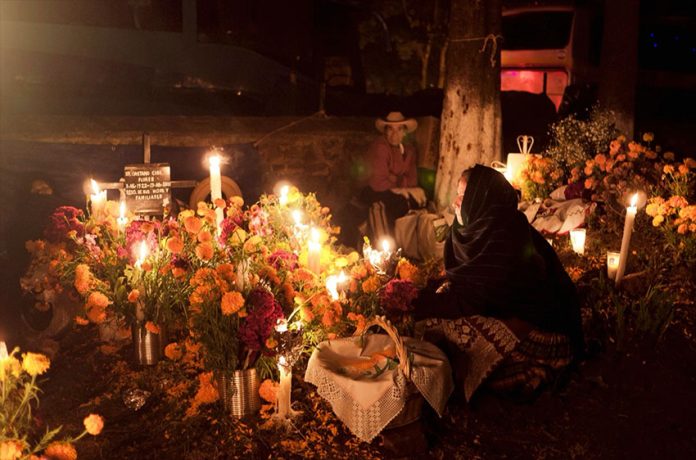Authorities in Michoacán are expecting over 300,000 tourists to flock to the state for this year’s Día de Muertos (Day of the Dead) holiday on November 1 and 2.
Pátzcuaro, Morelia, Uruapan and the Lake Páztcuaro islands of Janitzio and Yunuén are among the destinations expecting an influx of domestic and foreign tourists.
In addition to elaborate ofrendas (alters or offerings) in cemeteries and other locations, those destinations have other Day of the Dead attractions such as catrina parades featuring women painted as skeletons and Pirekua (an indigenous Purépecha song form) performances.
Michoacán Tourism Minister Roberto Monroy told a press conference that the annual Day of the Dead celebration is an important economic event for the state given the large number of tourists who arrive. He predicted this year’s holiday will generate 250 million pesos (US $12.4 million) in revenue for local businesses.
“We support the Purépecha communities and municipalities with 4.5 million pesos [US $223,000] so that they can buy the necessary articles to carry out the celebration,” he said, adding that the state government also helps coordinate events in different locations.
Monroy said that the 2017 animated film Coco spurred international interest in Michoacán’s Day of the Dead celebrations, with visitors from countries such as Japan, France and Colombia traveling to the state for the holiday in recent years. “Coco is a gift from Disney for Mexico,” he said.
The tourism minister also said that the Day of the Dead experience in Michoacán is unlike that in any other part of the country.
For his part, Pátzcuaro Mayor Julio Arreola said the celebration in the state is “magical and mystical” and noted that many hotels are already booked out.
Mexico’s Day of the Dead tradition is recognized as intangible cultural heritage of humanity by the United Nations Educational, Scientific and Cultural Organization.
“As practiced by the indigenous communities of Mexico, el Día de los Muertos (Day of the Dead) commemorates the transitory return to Earth of deceased relatives and loved ones,” the UN agency says on its website.
“… Families facilitate the return of the souls to Earth by laying flower petals, candles and offerings along the path leading from the cemetery to their homes. … The Day of the Dead celebration holds great significance in the life of Mexico’s indigenous communities. The fusion of pre-Hispanic religious rites and Catholic feasts brings together two universes, one marked by indigenous belief systems, the other by worldviews introduced by the Europeans in the 16th century.”
With reports from Milenio and Imagen Radio
